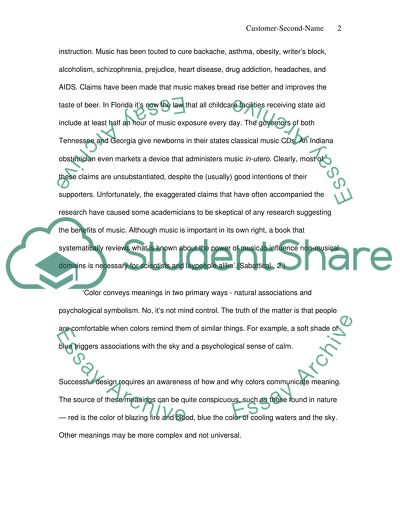Cite this document
(The Effect of Music and Color on People Essay Example | Topics and Well Written Essays - 2000 words, n.d.)
The Effect of Music and Color on People Essay Example | Topics and Well Written Essays - 2000 words. Retrieved from https://studentshare.org/music/1543104-music-and-color-which-ones-positively-affect-men-and-women-which-ones-negatively-affect-them
The Effect of Music and Color on People Essay Example | Topics and Well Written Essays - 2000 words. Retrieved from https://studentshare.org/music/1543104-music-and-color-which-ones-positively-affect-men-and-women-which-ones-negatively-affect-them
(The Effect of Music and Color on People Essay Example | Topics and Well Written Essays - 2000 Words)
The Effect of Music and Color on People Essay Example | Topics and Well Written Essays - 2000 Words. https://studentshare.org/music/1543104-music-and-color-which-ones-positively-affect-men-and-women-which-ones-negatively-affect-them.
The Effect of Music and Color on People Essay Example | Topics and Well Written Essays - 2000 Words. https://studentshare.org/music/1543104-music-and-color-which-ones-positively-affect-men-and-women-which-ones-negatively-affect-them.
“The Effect of Music and Color on People Essay Example | Topics and Well Written Essays - 2000 Words”. https://studentshare.org/music/1543104-music-and-color-which-ones-positively-affect-men-and-women-which-ones-negatively-affect-them.


